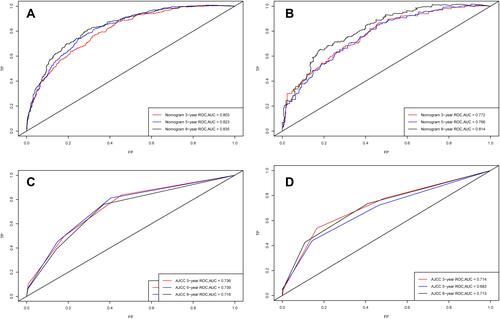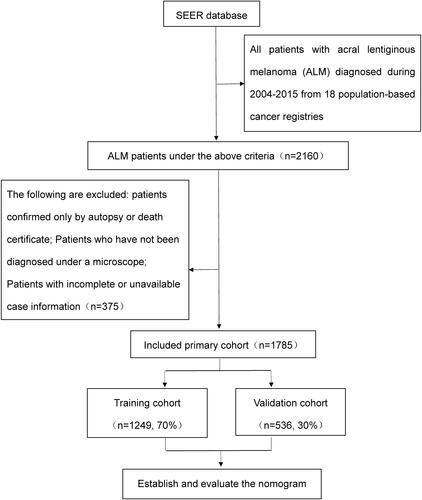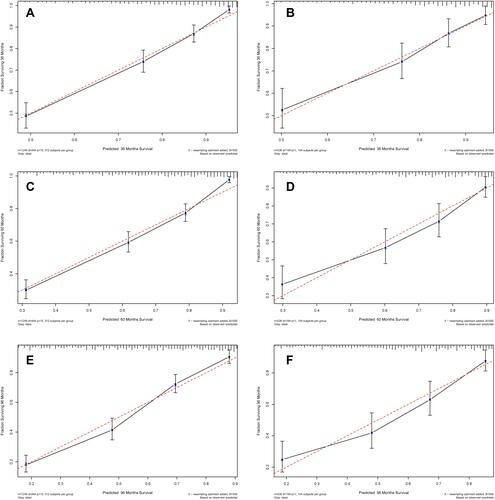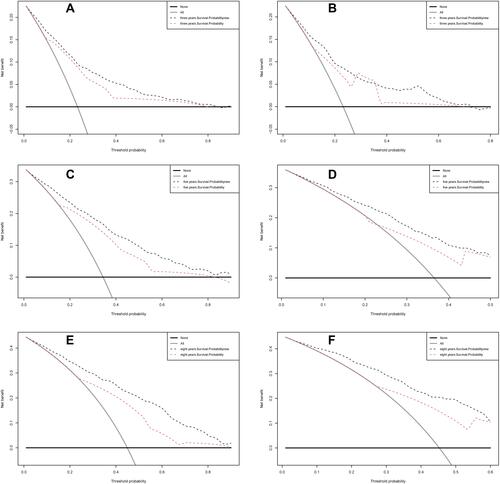Figures & data
Table 1 Baseline Characteristics of Patients with ALM
Table 2 Variables Selected by Multivariate Cox Regression Analysis (Training Cohort)
Figure 3 Receiver operating characteristic curves. (A and B) represent the training cohort and validation cohort of the nomogram, while (C and D) represent the training cohort and validation cohort of the AJCC staging system, respectively.





